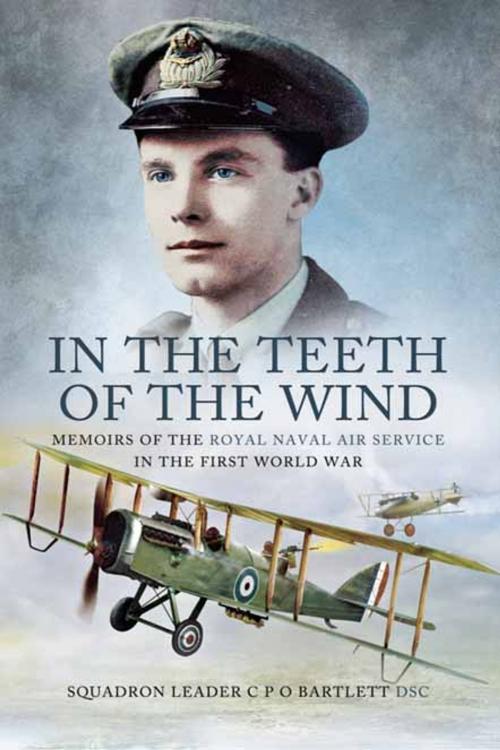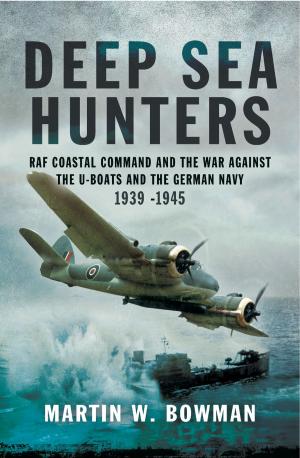In the Teeth of the Wind
Memoirs of the Royal Navy Air Service in the First World War
Nonfiction, History, Military, Aviation, World War I| Author: | Squadron Leader C P O Bartlette DSC | ISBN: | 9781473815483 |
| Publisher: | Pen and Sword | Publication: | October 17, 2013 |
| Imprint: | Pen and Sword Military | Language: | English |
| Author: | Squadron Leader C P O Bartlette DSC |
| ISBN: | 9781473815483 |
| Publisher: | Pen and Sword |
| Publication: | October 17, 2013 |
| Imprint: | Pen and Sword Military |
| Language: | English |
So rapid have been the advances in the science of aeronautics since the end of the First World War that it requires a considerable feat of imagination to cast one's mind back over the comparatively short period of seventy years to the days when Flight Commander Bartlett of the Royal Naval Air Service was flying some of the world's first bombers over the Western Front. An equal adjustment for those more used to accounts of the nerve-chilling existence of bomber crews in the Second World War is called for when tuning in to the extra ordinarily happy-go-lucky atmosphere which seemed to prevail among these early pilots. Not for them the nail-biting tension as they head over the trenches - rather the schoolboy exuberance of a jolly outing. Philip Bartlett's account is a unique and fascinating record of a pilot's life in the dawn of aerial warfare and, as history, of the first use of the bomber in war, strangely, by the Navy's aircraft. Flying by day and night alone, without navigational aids, the author moves from attacks on the U-boat bases to bombing the German Gothas as they prepared to raid London, and then to the support of Haig's drive to the coast which ended in the mud of Passchendaele. The climax in March, 1918, is reached when the author's squadron finds itself directly in the path of Ludendorff's massive thrust, which broke the British Vth Army and nearly decided the War. Attacked by Richthofen's aces, No 5 Squadron RNAS flew continuous and desperate missions against the advancing troops from aerodomes which were over-run time after time. At a time when the life of a pilot was reckoned in weeks, the author flew 101 missions, enduring the rigours of flying without heating or oxygen, with hesitant engines, no parachutes and the attention of German fighters. Yet there is continual evidence of the pure joy of flying and wonder at the sheer beauty of the the sky.
So rapid have been the advances in the science of aeronautics since the end of the First World War that it requires a considerable feat of imagination to cast one's mind back over the comparatively short period of seventy years to the days when Flight Commander Bartlett of the Royal Naval Air Service was flying some of the world's first bombers over the Western Front. An equal adjustment for those more used to accounts of the nerve-chilling existence of bomber crews in the Second World War is called for when tuning in to the extra ordinarily happy-go-lucky atmosphere which seemed to prevail among these early pilots. Not for them the nail-biting tension as they head over the trenches - rather the schoolboy exuberance of a jolly outing. Philip Bartlett's account is a unique and fascinating record of a pilot's life in the dawn of aerial warfare and, as history, of the first use of the bomber in war, strangely, by the Navy's aircraft. Flying by day and night alone, without navigational aids, the author moves from attacks on the U-boat bases to bombing the German Gothas as they prepared to raid London, and then to the support of Haig's drive to the coast which ended in the mud of Passchendaele. The climax in March, 1918, is reached when the author's squadron finds itself directly in the path of Ludendorff's massive thrust, which broke the British Vth Army and nearly decided the War. Attacked by Richthofen's aces, No 5 Squadron RNAS flew continuous and desperate missions against the advancing troops from aerodomes which were over-run time after time. At a time when the life of a pilot was reckoned in weeks, the author flew 101 missions, enduring the rigours of flying without heating or oxygen, with hesitant engines, no parachutes and the attention of German fighters. Yet there is continual evidence of the pure joy of flying and wonder at the sheer beauty of the the sky.















